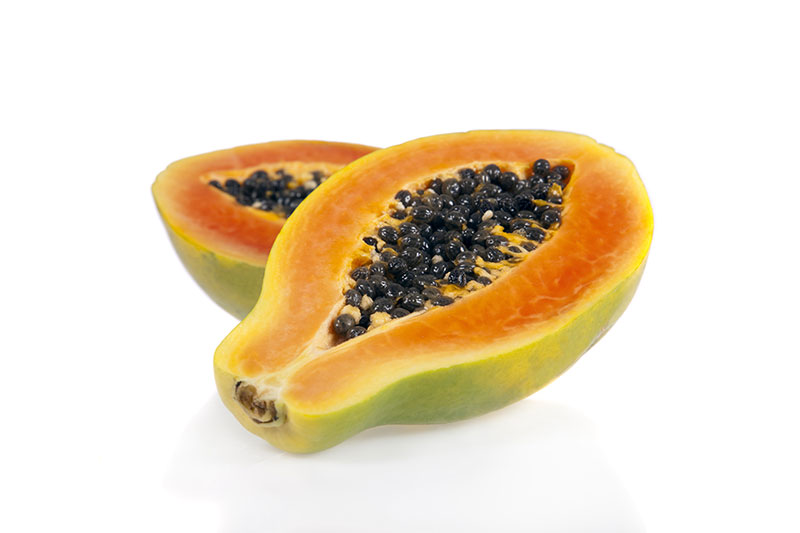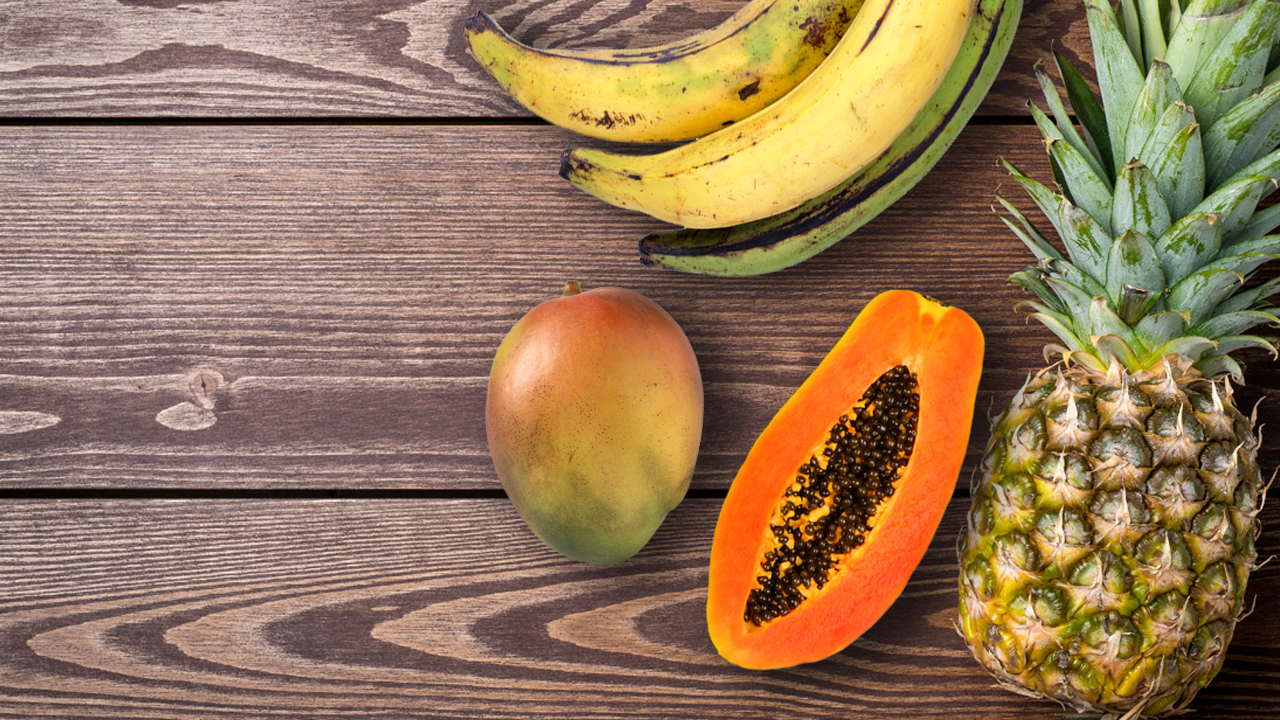Papaya

Availability:
Year-round
Availability:
| J | F | M | A | M | J | J | A | S | O | N | D |
Notice:
on demand
Receiving/Storage:
Storage/Handling: Temperature: 50 to 55 F, 0 to 12.8 C. Relative humidity: more than 80%. Mist: no. Typical shelf life: 3 to 5 days. Ethylene producer (Do not store or transport ethylene-sensitive items with commodities that produce ethylene.) Susceptible to chilling injury (Damage sometimes is not apparent until produce is returned to a warmer temperature.) Papayas ripen in two to three days when held at temperatures between 55 to 65 F, 12.8 to 18.5 C. Never store a papaya that is less than half ripe below 45 F, 7 C. Lower temperatures stop the ripening process. When ripe, the fruit can be refrigerated.
Description:
Sliced into a variety of shapes, the papaya can be cut and prepared ahead of serving time. It doesnÍt darken or discolor when exposed to air. Papayas can be served fresh, baked, stewed, saut_ed, barbecued or used as a garnish. Cook papaya chunks in meat, seafood and poultry dishes. Papayas contain the enzyme papain, which is used as a meat tenderizer. Sprinkle the juice on meat before cooking with the leaves. Once hollowed out, papayas can be stuffed with chicken or shrimp salad, cottage cheese, yogurt, ice cream or other fruits. Peel, seed and blend a papaya with milk, yogurt or orange juice for exotic tropical drinks. Papaya boats are the perfect container for a fruit salad. Papayas are a natural in tropical fruit displays with items such as mangoes, bananas, pineapples and coconuts. If the papaya is firm, it can be ripened in a dark area at room temperature. Placing the papaya in a paper bag with a banana can accelerate the process.


